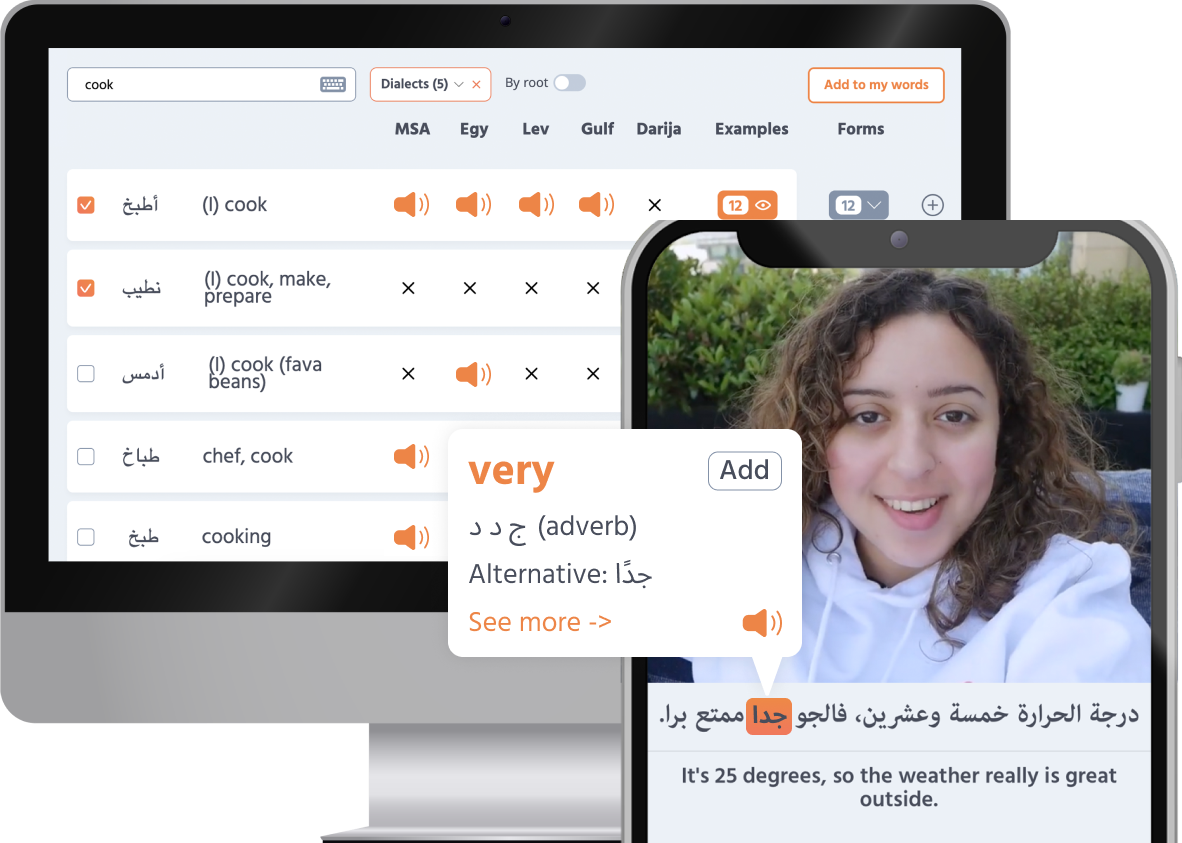Numbers are one of the most essential building blocks of any language—and Arabic is no exception. Whether you’re learning Modern Standard Arabic (MSA) Levantine Syrian , Jordanian , Lebanese , or Palestinian ), Egyptian Gulf North African Darija
Why are numbers important in Arabic? Numbers are used in everyday Arabic conversation. From telling the time, talking about prices, and sharing phone numbers to describing quantities, numbers are essential. Learning numbers in Arabic will introduce you to the language’s sound system, pronunciation rules and even cultural nuances.
Numbers from 0 to 10 Here’s a comparison of masculine numbers from 0 to 10 in MSA , Egyptian , Levantine , Gulf , and Darija . Note how most of them are written the same and sound pretty similar as well!
0 1 2 3 4 5 6 7 8 9 10 MSA صفر
واحد
اثنان
ثلاثة
أربعة
خمسة
ستة
سبعة
ثمانية
تسعة
عشرة
Levantine صفر
واحد
اتنين
تلاتة
أربعة
خمسة
ستة
سبعة
تمانة
تسعة
عشرة
Egyptian صفر
واحد
اتنين
تلاتة
أربعة
خمسة
ستة
سبعة
تمانية
تسعة
عشرة
Gulf صفر
واحد
اثنين
ثلاثة
أربعة
خمسة
ستة
سبعة
ثمانية
تسعة
عشرة
Darija صفر
واحد
جوج
تلاتة
ربعة
خمسة
ستة
سبعَة
تمنية
تسعود
عشرة
This clip is from a video for learning numbers from 0 to 10 in MSA . Check out more counting videos in Levantine (such as Syrian or Palestinian ), Egyptian , Gulf , and Darija .
Numbers from 11 to 20 Here’s a comparison of masculine numbers from 11 to 19 in MSA , Egyptian , Levantine , Gulf , and Darija . Note how similar they are across major varieties of Arabic!
11 12 13 14 15 16 17 18 19 20 MSA أحد عشر
إثنا عشر
ثلاثة عشر
أربعة عشر
خمسة عشر
ستة عشر
سبعة عشر
ثمانية عشر
تسعة عشر
عشرون
Levantine احدعش
تنعش
تلتعش
أربعتش
خمستعش
ستعش
سبعتعش
تمنتعش
تسعتعش
عشرين
Egyptian حداشر
إتناشر
تلتاشر
أربعتاشر
خمستاشر
ستاشر
سبعتاشر
تمنتاشر
تسعتاشر
عشرين
Gulf إحدعش
إثنعش
ثلاتعش
أربعتعش
خمستعش
ستعش
سبعتعش
ثمنتعش
تسعتعش
عشرين
Darija حداش
طناش
تلطاش
ربعطاش
خمسطاش
سطاش
سبعطاش
تمنطاش
تسعطاش
عشرين
This clip is from a video on learning numbers 11 to 20 in Egyptian Arabic . Don’t miss out more videos for counting from 11 to 20 in Levantine (Syrian and Palestinian ), Egyptian , Gulf , and Darija .
Counting by tens: 30 to 90 Multiples of ten in Arabic are also worth memorizing. They can follow a base root but slightly vary in pronunciation across different dialects. Again, note their similarity.
Numbers from 30 to 90
MSA Egyptian Levantine Gulf Darija 30 ثلاثون
تلاتين
تلاتين
ثلاثين
تلاتين
40 أربعون
أربعين
أربعين
أربعين
ربعين
50 خمسون
خمسين
خمسين
خمسين
خمسين
60 ستون
ستين
ستين
ستين
ستين
70 سبعون
سبعين
سبعين
سبعين
سبعين
80 ثمانون
تمانين
تمانين
ثمانين
تمانين
90 تسعون
تسعين
تسعين
تسعين
تسعين
This clip is from a video on learning to count from 30 to 100 in Palestinian/Jordanian Arabic, counting by tens: thirty, forty, fifty, sixty… up to one hundred. Don’t miss these videos on counting from 30 to 100 (by tens) in Standard Arabic , Levantine dialects (Syrian and Palestinian ), as well as Egyptian , Gulf , and Darija dialects.
Larger numbers: 100 and beyond Learning larger numbers like 100 , 200 , and 300 —and even big milestones like 1,000 or 1,000,000 —is an exciting step toward fluency. While Modern Standard Arabic (MSA) uses formal forms like مئة and مليون , spoken dialects often use shorter, more casual variants. The table below shows how these numbers vary across Arabic dialects.
Numbers from 100 to 1 Billion
MSA Egyptian Levantine Gulf Darija 100 مئة
مية
مية
مية
مية
200 مئتان
ميتين
ميتين
ميتين
ميتين
300 ثلاثمائة
تلتمية
تلاتمية
ثلاثمية
تلتمية
400 أربعمائة
ربعمية
أربعمية
أربعمية
أربعمية
500 خمسمائة
خمسمية
خمسمية
خمسمية
خمسمية
600 ستمائة
ستمية
ستمية
ستمية
ستمية
700 سبعمائة
سبعمية
سبعمية
سبعمية
سبعمية
800 ثمانمائة
تمنمية
تمانمية
ثمانمية
تمنمية
900 تسعمائة
تسعمية
تسعمية
تسعمية
تسعمية
1000 ألف
ألف
ألف
ألف
ألف
1,000,000 مليون
مليون
مليون
مليون
مليون
1,000,000,000 مليار
مليار
مليار
مليار
مليار
This clip is from a video on learning to count from 100 to 1000 in Syrian Arabic , counting by tens. This clip is from a video on learning to count from 100 to 1000 in Moroccan Arabic , counting by tens. Check out these videos to learn how to count large numbers in Standard Arabic and different dialects, including Levantine (Syrian and Palestinian ), Egyptian , and Gulf !
Oh, and by the way… If learning Arabic at your own pace, with fun, real-world videos sounds like your style, then Playaling could be exactly what you’re looking for!
With Playaling, you’ll dive into any major Arabic dialect or MSA. Our diverse range of videos has it all—from everyday conversations and cultural moments to music videos, TV and movie clips, influencer content, news broadcasts, and inspiring talks.
Our interactive captions let you tap any word for instant translations, context, and audio. So, real Arabic content becomes accessible with just a click. Miss something? No problem—rewind and listen as often as you need, or hover over subtitles for quick definitions.
Spot a word you want to learn? Save it to your personalized word set, or dive into curated sets for focused practice and easy review.
Interactive exercises let you dive in and practice what you’ve learned.
Need to look something up? The Audio Dictionary has you covered with clear human pronunciations and real world examples.
It’s a learning experience that keeps you engaged, bringing authentic, real-world Arabic closer to you every step of the way.
Give it a try!









